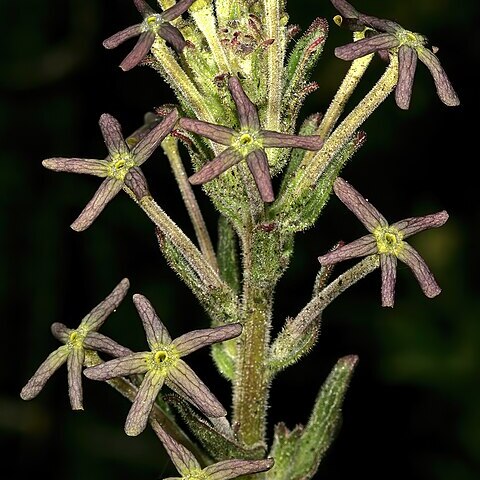Annual herb, ± 30-600 mm high; stems simple or little branched, leafy, most parts glandular-pubescent. Leaves: lower ones tapering into long petiole, grading to sessile upwards, up to 75 x 25 mm, ± elliptic, obtuse, margins entire to deeply dentate. Flowers single, in axils of bracts, shortly pedicellate, first in terminal corymbs, then lengthening into racemes up to 500 mm long. Corolla: tube up to 29 x 2 mm, cylindrical but wider near top; limb ± regular, glabrous above except for tiny glands with stalks round mouth, ± white to greenish yellow or yellow, darker when old, clove-scented after dark.
Glandular-hairy annual, up to 600 mm tall. Leaves elliptic, sometimes toothed. Flowers in racemes, corolla tube 20-29 mm long, inflated above, lobes narrow, whitish to yellow or brown, clove-scented at night, fertile stamens 4.
Glandular-hairy annual to 60 cm. Leaves sometimes toothed. Flowers in racemes, ± 9-23 mm diam., tube abruptly inflated above, 20-29 mm long, lobes narrow, whitish to yellow or brown, clove-scented at night, fertile stamens 4.

